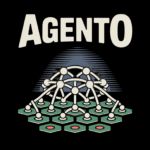In this tutorial, we demonstrate how to combine the strengths of symbolic reasoning with neural learning to build a powerful hybrid agent. We focus on creating a neuro-symbolic architecture that uses classical planning for structure, rules, and goal-directed behavior, while neural networks handle perception and action refinement. As we walk through the code, we see how both layers interact in real time, allowing us to navigate an environment, overcome uncertainty, and adapt intelligently. At last, we understand how neuro-symbolic systems bring interpretability, robustness, and flexibility together in a single agentic framework. Check out the FULL CODES here.
import numpy as np
import matplotlib.pyplot as plt
from dataclasses import dataclass, field
from typing import List, Dict, Tuple, Set, Optional
from collections import deque
import warnings
warnings.filterwarnings('ignore')
@dataclass
class State:
robot_pos: Tuple[int, int]
holding: Optional[str] = None
visited: Set[Tuple[int, int]] = field(default_factory=set)
objects_collected: Set[str] = field(default_factory=set)
def __hash__(self):
return hash((self.robot_pos, self.holding))
class SymbolicPlanner:
def __init__(self, grid_size: int = 8):
self.grid_size = grid_size
self.actions = ['up', 'down', 'left', 'right', 'pickup', 'drop']
def get_successors(self, state: State, obstacles: Set[Tuple[int, int]], objects: Dict[str, Tuple[int, int]]) -> List[Tuple[str, State]]:
successors = []
x, y = state.robot_pos
moves = {'up': (x, y-1), 'down': (x, y+1), 'left': (x-1, y), 'right': (x+1, y)}
for action, new_pos in moves.items():
nx, ny = new_pos
if (0 <= nx < self.grid_size and 0 <= ny < self.grid_size and new_pos not in obstacles):
new_state = State(new_pos, state.holding, state.visited | {new_pos}, state.objects_collected.copy())
successors.append((action, new_state))
if state.holding is None:
for obj_name, obj_pos in objects.items():
if state.robot_pos == obj_pos and obj_name not in state.objects_collected:
new_state = State(state.robot_pos, obj_name, state.visited.copy(), state.objects_collected.copy())
successors.append(('pickup', new_state))
if state.holding is not None:
new_state = State(state.robot_pos, None, state.visited.copy(), state.objects_collected | {state.holding})
successors.append(('drop', new_state))
return successors
def heuristic(self, state: State, goal: Tuple[int, int]) -> float:
return abs(state.robot_pos[0] - goal[0]) + abs(state.robot_pos[1] - goal[1])
def a_star_plan(self, start_state: State, goal: Tuple[int, int], obstacles: Set[Tuple[int, int]], objects: Dict[str, Tuple[int, int]]) -> List[str]:
counter = 0
frontier = [(self.heuristic(start_state, goal), counter, 0, start_state, [])]
visited = set()
while frontier:
frontier.sort()
_, _, cost, state, plan = frontier.pop(0)
counter += 1
if state.robot_pos == goal and len(state.objects_collected) >= len(objects):
return plan
state_key = (state.robot_pos, state.holding)
if state_key in visited:
continue
visited.add(state_key)
for action, next_state in self.get_successors(state, obstacles, objects):
new_cost = cost + 1
new_plan = plan + [action]
priority = new_cost + self.heuristic(next_state, goal)
frontier.append((priority, counter, new_cost, next_state, new_plan))
counter += 1
return []We lay the foundation for our symbolic reasoning system and define how states, actions, and transitions work. We implement classical planning logic using A* search to generate goal-directed, interpretable action sequences. As we build this part, we establish the rule-based backbone that guides the agent’s high-level decisions. Check out the FULL CODES here.
class NeuralPerception:
def __init__(self, grid_size: int = 8):
self.grid_size = grid_size
self.W1 = np.random.randn(grid_size * grid_size, 64) * 0.1
self.b1 = np.zeros(64)
self.W2 = np.random.randn(64, 32) * 0.1
self.b2 = np.zeros(32)
self.W3 = np.random.randn(32, grid_size * grid_size) * 0.1
self.b3 = np.zeros(grid_size * grid_size)
def relu(self, x):
return np.maximum(0, x)
def sigmoid(self, x):
return 1 / (1 + np.exp(-np.clip(x, -500, 500)))
def perceive(self, noisy_grid: np.ndarray) -> np.ndarray:
x = noisy_grid.flatten()
h1 = self.relu(x @ self.W1 + self.b1)
h2 = self.relu(h1 @ self.W2 + self.b2)
out = self.sigmoid(h2 @ self.W3 + self.b3)
return out.reshape(self.grid_size, self.grid_size)
class NeuralPolicy:
def __init__(self, state_dim: int = 4, action_dim: int = 4):
self.W = np.random.randn(state_dim, action_dim) * 0.1
self.b = np.zeros(action_dim)
self.action_map = ['up', 'down', 'left', 'right']
def softmax(self, x):
exp_x = np.exp(x - np.max(x))
return exp_x / exp_x.sum()
def get_action_probs(self, state_features: np.ndarray) -> np.ndarray:
logits = state_features @ self.W + self.b
return self.softmax(logits)
def select_action(self, state_features: np.ndarray, symbolic_action: str) -> str:
probs = self.get_action_probs(state_features)
if symbolic_action in self.action_map:
sym_idx = self.action_map.index(symbolic_action)
probs[sym_idx] += 0.7
probs = probs / probs.sum()
return np.random.choice(self.action_map, p=probs)We introduce the neural components that allow our agent to sense and adapt. We design a lightweight neural network to denoise the environment and a simple policy network to refine actions based on features. As we integrate these elements, we ensure that our agent can handle uncertainty and adjust behavior dynamically. Check out the FULL CODES here.
class NeuroSymbolicAgent:
def __init__(self, grid_size: int = 8):
self.grid_size = grid_size
self.planner = SymbolicPlanner(grid_size)
self.perception = NeuralPerception(grid_size)
self.policy = NeuralPolicy()
self.obstacles = {(3, 3), (3, 4), (4, 3), (5, 5), (6, 2)}
self.objects = {'key': (2, 6), 'gem': (6, 6)}
self.goal = (7, 7)
def create_noisy_observation(self, true_grid: np.ndarray) -> np.ndarray:
noise = np.random.randn(*true_grid.shape) * 0.2
return np.clip(true_grid + noise, 0, 1)
def extract_state_features(self, pos: Tuple[int, int], goal: Tuple[int, int]) -> np.ndarray:
return np.array([pos[0]/self.grid_size, pos[1]/self.grid_size, goal[0]/self.grid_size, goal[1]/self.grid_size])
def execute_mission(self, verbose: bool = True) -> Tuple[List, List]:
start_state = State(robot_pos=(0, 0), visited={(0, 0)})
symbolic_plan = self.planner.a_star_plan(start_state, self.goal, self.obstacles, self.objects)
if verbose:
print(f"🧠 Symbolic Plan Generated: {len(symbolic_plan)} steps")
print(f" Plan: {symbolic_plan[:10]}{'...' if len(symbolic_plan) > 10 else ''}\n")
true_grid = np.zeros((self.grid_size, self.grid_size))
for obs in self.obstacles:
true_grid[obs[1], obs[0]] = 1.0
noisy_obs = self.create_noisy_observation(true_grid)
perceived_grid = self.perception.perceive(noisy_obs)
if verbose:
print(f"👁️ Neural Perception: Denoised obstacle map")
print(f" Perception accuracy: {np.mean((perceived_grid > 0.5) == true_grid):.2%}\n")
trajectory = [(0, 0)]
current_pos = (0, 0)
actions_taken = []
for i, sym_action in enumerate(symbolic_plan[:30]):
features = self.extract_state_features(current_pos, self.goal)
refined_action = self.policy.select_action(features, sym_action) if sym_action in ['up','down','left','right'] else sym_action
actions_taken.append(refined_action)
if refined_action == 'up': current_pos = (current_pos[0], max(0, current_pos[1]-1))
elif refined_action == 'down': current_pos = (current_pos[0], min(self.grid_size-1, current_pos[1]+1))
elif refined_action == 'left': current_pos = (max(0, current_pos[0]-1), current_pos[1])
elif refined_action == 'right': current_pos = (min(self.grid_size-1, current_pos[0]+1), current_pos[1])
if current_pos not in self.obstacles:
trajectory.append(current_pos)
return trajectory, actions_takenWe bring the symbolic and neural layers together into a unified agent. We generate a symbolic plan, perceive the environment through neural processing, and refine each planned action using the neural policy. As we execute the mission loop, we observe how both systems interact seamlessly to produce robust behavior. Check out the FULL CODES here.
def visualize_execution(agent: NeuroSymbolicAgent, trajectory: List, title: str = "Neuro-Symbolic Agent Execution"):
fig, axes = plt.subplots(1, 2, figsize=(14, 6))
ax = axes[0]
grid = np.zeros((agent.grid_size, agent.grid_size, 3))
for obs in agent.obstacles:
grid[obs[1], obs[0]] = [0.3, 0.3, 0.3]
for obj_pos in agent.objects.values():
grid[obj_pos[1], obj_pos[0]] = [1.0, 0.8, 0.0]
grid[agent.goal[1], agent.goal[0]] = [0.0, 1.0, 0.0]
for i, pos in enumerate(trajectory):
intensity = 0.3 + 0.7 * (i / len(trajectory))
grid[pos[1], pos[0]] = [intensity, 0.0, 1.0]
if trajectory:
grid[trajectory[0][1], trajectory[0][0]] = [1.0, 0.0, 0.0]
ax.imshow(grid)
ax.set_title("Agent Trajectory in Environment", fontsize=14, fontweight="bold")
ax.set_xlabel("X Position")
ax.set_ylabel("Y Position")
ax.grid(True, alpha=0.3)
ax = axes[1]
ax.axis('off')
ax.text(0.5, 0.95, "Neuro-Symbolic Architecture", ha="center", fontsize=16, fontweight="bold", transform=ax.transAxes)
layers = [("SYMBOLIC LAYER", 0.75, "Planning • State Logic • Rules"), ("↕ INTEGRATION", 0.60, "Feature Extraction • Action Blending"), ("NEURAL LAYER", 0.45, "Perception • Policy Learning"), ("↕ EXECUTION", 0.30, "Action Refinement • Feedback"), ("ENVIRONMENT", 0.15, "State Transitions • Observations")]
colors = ['#FF6B6B', '#4ECDC4', '#45B7D1', '#96CEB4', '#FFEAA7']
for i, (name, y, desc) in enumerate(layers):
ax.add_patch(plt.Rectangle((0.1, y-0.05), 0.8, 0.08, facecolor=colors[i], alpha=0.7, transform=ax.transAxes))
ax.text(0.5, y, f"{name}\n{desc}", ha="center", va="center", fontsize=10, fontweight="bold", transform=ax.transAxes)
plt.tight_layout()
plt.savefig('neurosymbolic_agent.png', dpi=150, bbox_inches="tight")
plt.show()
print(f"\n✅ Execution complete! Trajectory length: {len(trajectory)} steps")We visualize how the agent moves through the environment and how the architecture is structured. We plot obstacles, objects, the goal, and the full trajectory so that we can clearly see the agent’s decision process. As we render the architecture layers, we understand how the hybrid design flows from planning to perception to action. Check out the FULL CODES here.
if __name__ == "__main__":
print("=" * 70)
print("NEURO-SYMBOLIC HYBRID AGENT TUTORIAL")
print("Combining Classical AI Planning with Modern Neural Networks")
print("=" * 70)
print()
agent = NeuroSymbolicAgent(grid_size=8)
trajectory, actions = agent.execute_mission(verbose=True)
visualize_execution(agent, trajectory)
print("\n" + "=" * 70)
print("KEY INSIGHTS:")
print("=" * 70)
print("✦ Symbolic Layer: Provides interpretable, verifiable plans")
print("✦ Neural Layer: Handles noisy perception & adapts to uncertainty")
print("✦ Integration: Combines strengths of both paradigms")
print("✦ Benefits: Explainability + Flexibility + Robustness")
print("=" * 70)We run the complete neuro-symbolic pipeline from planning to execution to visualization. We instantiate the agent, execute the mission, and display key insights to summarize the system’s behavior. As we run this final block, we see the overall hybrid architecture in action and appreciate how each component contributes to the outcome.
In conclusion, we observe how smoothly the symbolic and neural components work together to produce a more capable and reliable agent. We appreciate how the symbolic planner gives us transparent, verifiable steps, while the neural layer adds adaptability and perceptual grounding that pure logic cannot offer. Through this hybrid approach, we can build agents that reason, perceive, and act in ways that are both intelligent and interpretable. We end with a deeper understanding of how neuro-symbolic AI moves us closer to practical, resilient agentic systems.
Check out the FULL CODES here. Feel free to check out our GitHub Page for Tutorials, Codes and Notebooks. Also, feel free to follow us on Twitter and don’t forget to join our 100k+ ML SubReddit and Subscribe to our Newsletter. Wait! are you on telegram? now you can join us on telegram as well.
Asif Razzaq is the CEO of Marktechpost Media Inc.. As a visionary entrepreneur and engineer, Asif is committed to harnessing the potential of Artificial Intelligence for social good. His most recent endeavor is the launch of an Artificial Intelligence Media Platform, Marktechpost, which stands out for its in-depth coverage of machine learning and deep learning news that is both technically sound and easily understandable by a wide audience. The platform boasts of over 2 million monthly views, illustrating its popularity among audiences.










